

October 31, 2019
Great cultures ,Productivity ,Tools
Everyone knows the path to success is not a straight line, but it’s NOT total chaos like some think either:
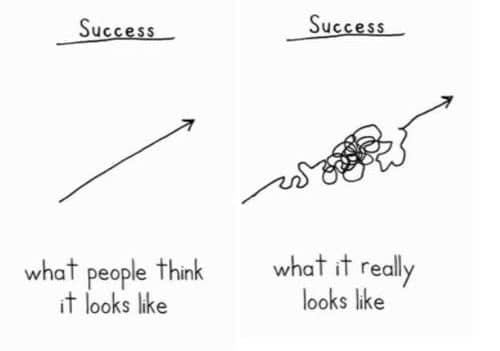
Image credit: This Is A Book, by Demetri Martin
I think the best path is described in the book Principles, by Ray Dahlio.

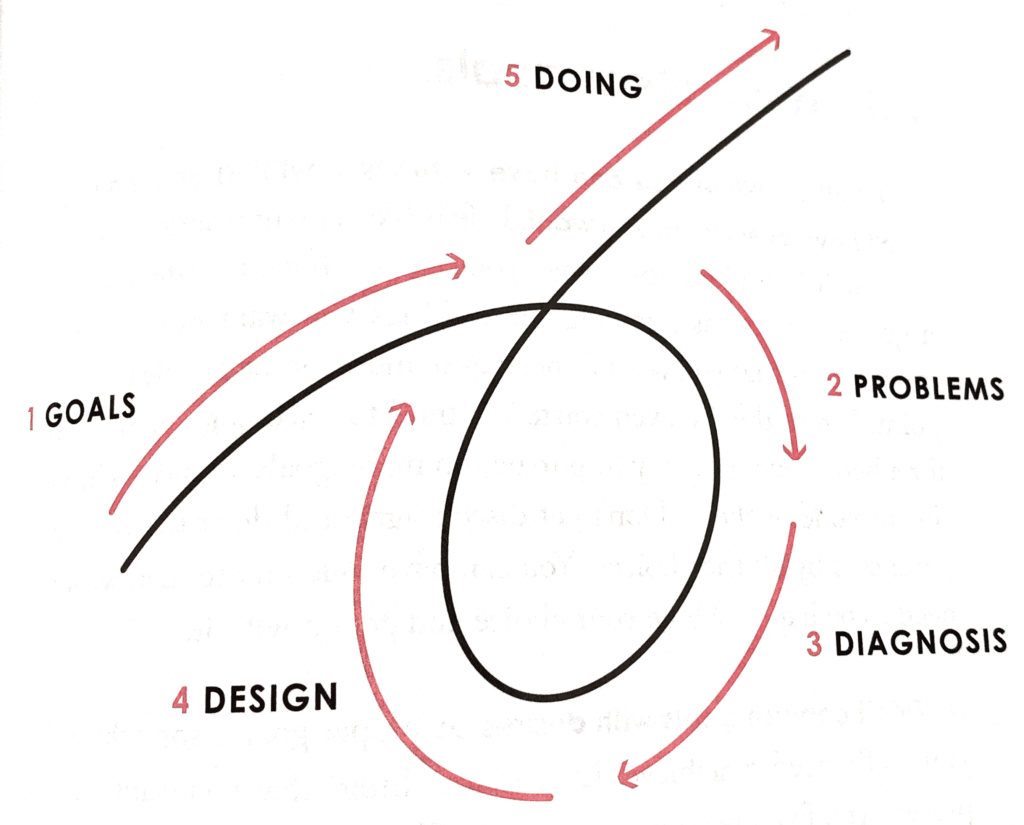
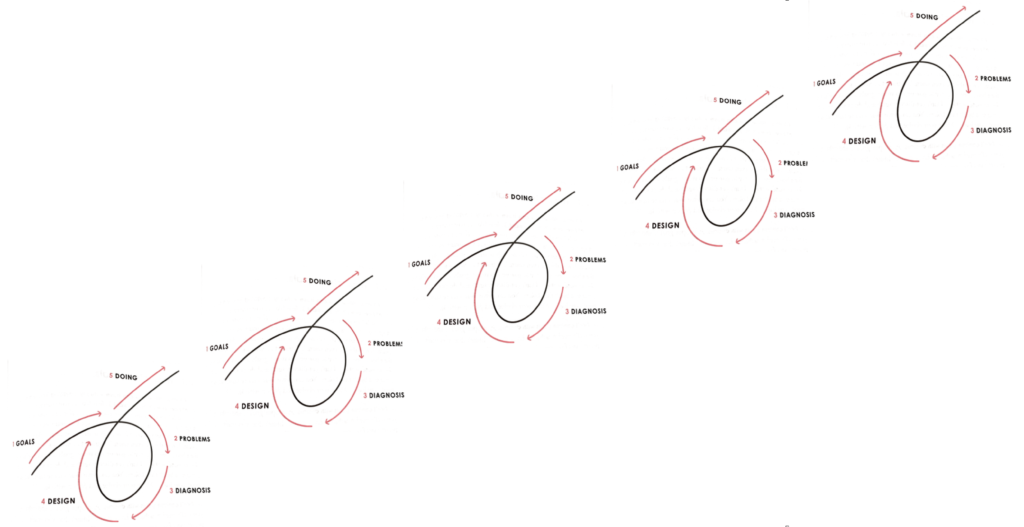

October 14, 2019
Great cultures ,Hacks ,Personal Exploration ,Tools
“How lucky are you on a scale from 0-10?”
Zappos recruiting would ask this question in interviews because people who feel lucky are generally grateful, joyful and optimistic. People who don’t feel lucky tend to believe that they haven’t been given many breaks and they can’t rely on anyone. In other words, they’re not the best team players.
I’ve thought a lot about luck over the years, because I’ve been very lucky. One of my business partners once called his “good luck charm.” He said he believed things went well when I’m around and that there’s this sense that anything is possible.
And it often triggers people when I say I’m lucky. They think luck means leaving everything to chance. They think it means taking no responsibility for what happens. And in some ways I think they’re right. I mean, how much control do we really have? And how many good things have happened that we just can’t explain? (PS – People who don’t like the word luck usually prefer the word “fortunate”).
So let me tell you what I think it is, and how I think you can get more of it.
Most people call luck the intersection of preparation and opportunity.
If you ask very successful people what’s the one thing they would need besides money if they lost everything and had to start again – it’s their Contacts Book (also called a rolodex). The contacts I’ve met have been key to all of my success, and those moments we meet are the game changers.
I happened to be at Georgetown Leadership School at the same time as Dave Logan. And that got us into Zappos where I happened to meet Tony Hsieh with an author we both loved, which started our conversations that lead to me coming to Zappos. Before that moment I couldn’t get a job in organizational development for the life of me.
Tony would call it the power of serendipity. So he made sure all the fire exits were closed to regular traffic so that everyone went through one entrance and could meet people they would otherwise never see. Now he’s doing that with his downtown abode, where they’ve recreated a version of Burning Man.
I’ve met amazing people there, and I continue to meet amazing people wherever I go.
So here’s a few tips on how to engineer your own luck…
1. Show up early
To everything. By showing up early you create the space to meet people that you otherwise would never meet. If you’re only on time or showing up late, you close down that window of opportunity.
2. Follow the energy
When I lost everything in a venture, I didn’t want to do any kind of work… except being a Spinning instructor. And (at the time) there was no money in that. But it was the only thing I felt gave me energy. By doing it, I increased my energy, and then brought that energy into my interactions that helped me get my next big break. It made no sense, but I followed the energy. What
3. Assume you’re in it.
Rather than trying to find these moments (being in the right place at the right time with the right people), go into situations assuming you’re already there, and get curious about what you could learn, or contribute with them.
Have fun and tell me how it goes!
October 7, 2019
Culture of Chaos ,Great cultures ,Hacks
Of course there are many things that drive us, but when we’re talking about culture, we’re talking about relationships. There is no culture without people and it’s what’s invisible, and what’s between us that matters.
So try this on for size…
We want both safety and danger.
Think about it. We all need safety. It’s basic within the Maslow hierarchy of needs. But imagine that everything was safe, and nothing ever changed. Nothing was at risk. In a word, we’d get bored. I talked to someone at a very prestigious company that everyone wants to work for and she said there’s no challenge and she wants to find something more exciting.
And of course, if everything was a big risk then our nervous systems would be shot.
So the answer is both.
It goes back to our primary relationship with our parents. The kids who grow up with healthy relationships are those who were given safety to feel at ease, but also given the chance to expand and test our boundaries. If we were overprotected then we get soft, and anxious when anything challenges our world. If we were given no safety and supervision then it feels like we can’t rely on anyone to have our backs.
The best cultures create a sense of safety to speak our minds, and be ourselves without needing to hide. And at the same time they give us big challenges that are outside of our comfort zone so that we can grow and the company can grow as a whole.
I remember when I rode the “Saints to Sinners” bike race with the Zappos cycling team. We had an SUV with 5 guys to ride for 24 hours from Salt Lake City to Las Vegas. I remember riding through a thunderstorm and feeling safe because if anything went wrong my team was there. And I even rode in the pitch dark with only a small light in front of me. It felt scary, but I knew that my team was trailing me a few miles behind, so I was totally safe.
I had that experience at Burning Man as well. I was riding through the desert at midnight when a sand storm picked up. Very dangerous, but I felt totally safe because I had my mask, water and two friends by my side.
Remember, at its core, it’s all a feeling.
As a leader are you cultivating your own sense of balance? Do you have established systems and protocols to rely on (feel safe) while still working on the big hairy audacious goals? Both are important and maintaining both will create an engaged environment where people don’t want to leave.
September 23, 2019
Great cultures
This is first time in years I returned to Zappos, this time for the Responsive Conference, perhaps the most cutting edge event on corporate culture that I know. Here are a few things I learned, through the lens of my own interests (not at all a comprehensive review).
Gary V has predicted that mental health will become a big issue for businesses to solve. I think it’s both stress on the rise, as well as more people openly sharing their challenges. David Hanrahan, VP of People and Places at Niantic, lead the session…
More ventures are developing apps to solve this (below).
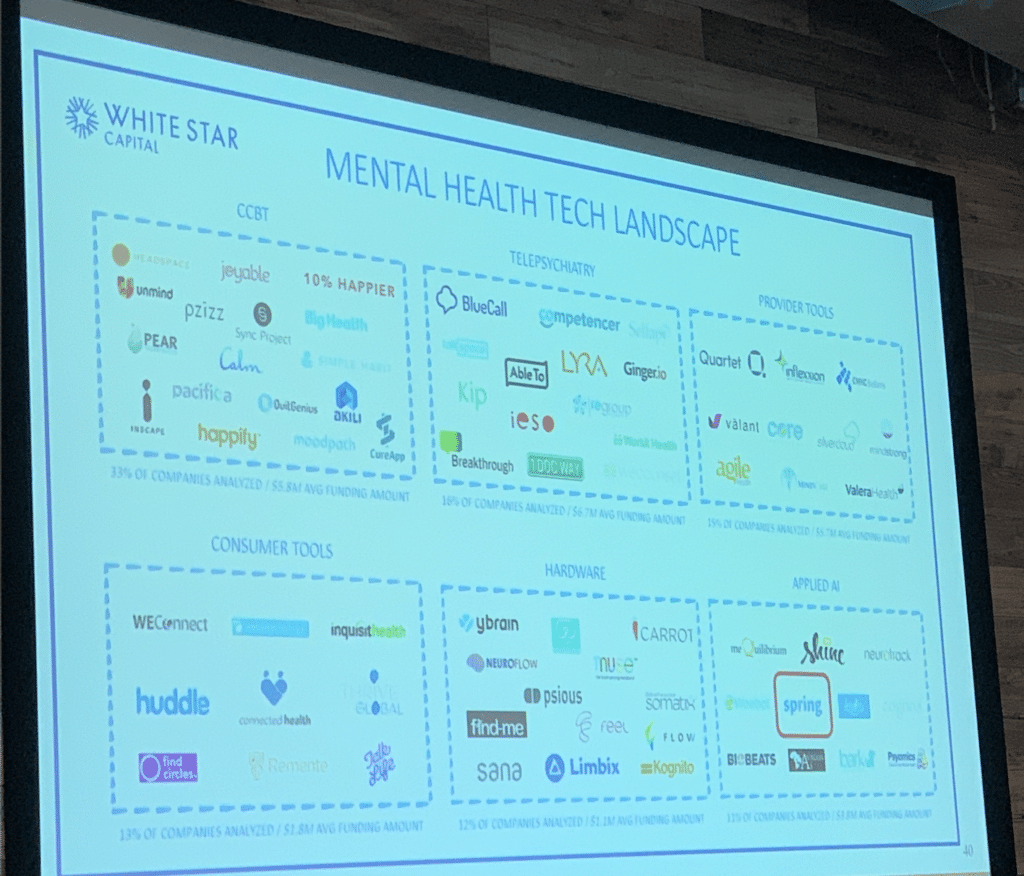
Ernst and Young has developed strong mental health programs.
“The program – officially titled “r u ok?” – is an effort to end the stigma that surrounds mental health while connecting employees to existing resources within the organization. The program incorporates employee champions, cross-country presentations, virtual events, e-learning curriculums, peer-to-peer connections and follow-up services.
“The program has generated more than 49,000 touch points among US employees, including more than 23,000 articles read; 21,000 website hits; 1,000+ events attended; 781 e-learnings completed and more than 1,000 EY Assist consults.”
Rajkumari Neogi of iRestart gave a brilliant keynote on emotions and how they effect us. We all want to belong, but she makes the point that fitting in is actually the opposite of belonging. In order to fit in, we have to play to the mold. But if we want to feel belonging, then we want acceptance for what makes us unique, and that means being vulnerable.
She showed how typical troublemakers are actually suffering:
Bully – Feels worthless
Complainer – Feels hopeless
Caretaker – Feels Helpless
Micro Manager – Feels terrified.
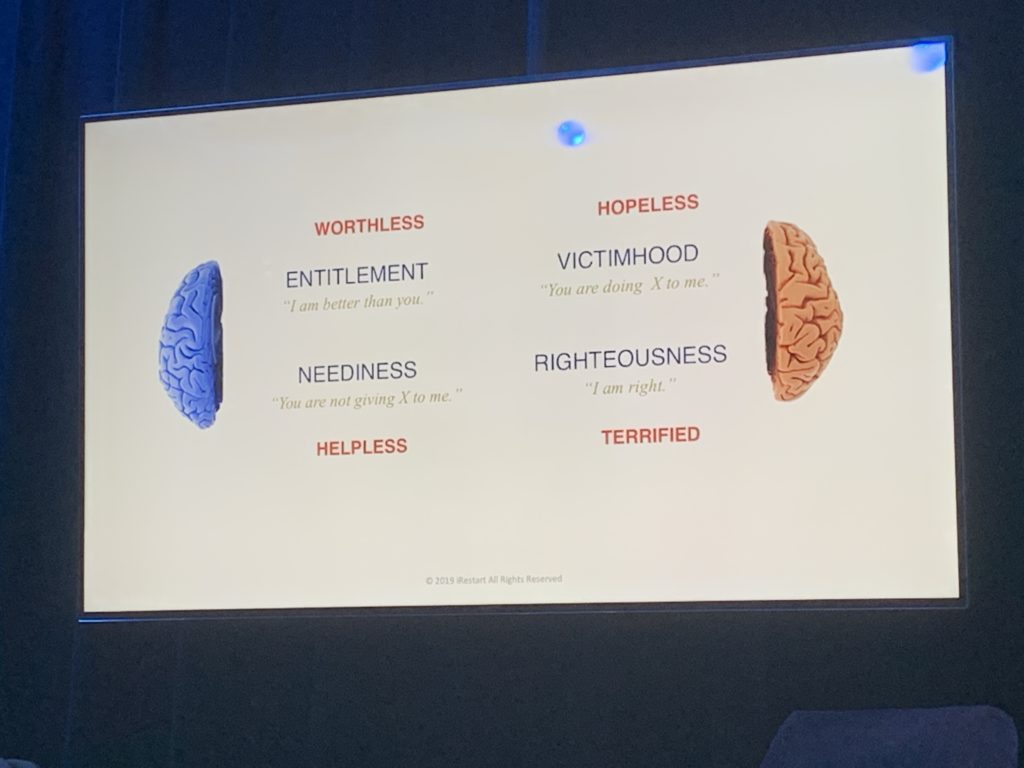
And I’m particularly fascinated by her breakdown of the brain chemistry of our emotions:
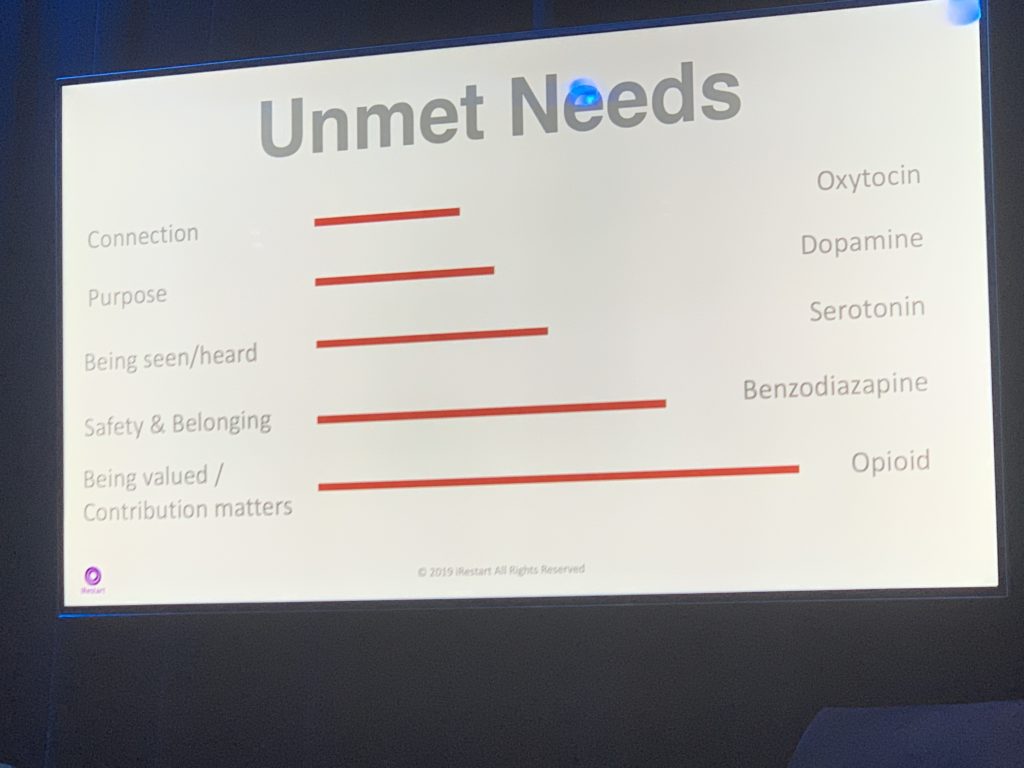
It makes me wonder what causes what.
I’m currently working on my own brain chemistry right now, and especially intrigued by how GABA plays a role. Neogi is very excited by this as well. Having experimented with it in various forms, I believe the feeling GABA provides is one of feeling complete – in other words, the opposite of that feeling like we just can’t get enough done, and thinking about other things do to do, rather than being present. I asked her about it and we decided to meet up and continue the conversation.
If there’s a way to address this behaviorally, then I would say it’s this next part.
I was so surprised to see Mike Williams wearing a Zappos badge. Mike was the former COO for the David Allen Co (the author of Getting Things Done).
I met Mike several years ago at the Hacking Holacracy conference. He said that Holacracy basically blew up the company — It went from a 40 person sales, training, coaching and community company to a 7 person licensing company. I thought this sounded like a horror story up until I heard Brian Roberston (Holacracy founder) explain what happened at this conference. Through Holacracy they realized they’re world class at managing the brand and training trainers, so they licensed out everything else (such as sales) to those who are world class. Now they are reaching more people than ever.
For those of you who don’t me, GTD is like religion for me. It saves me from the chaos of my mind and all my ideas and tasks swirling all over the place. And I have often felt like the Prodigal Son, going far off the rails, only to come back and realize how powerful and peaceful this system is. I think as we have more and more distractions and more opportunities, a system like GTD is going to be so important. At Zappos I used to train people on how to get their Inbox to zero everyday and it was a game changer when people really got it.
So Mike is a king in this space, and co-authored GTD for Teens, which may actually be the best entry point for adults since the new revised GTD book is so dense. I was so happy to see Mike is now with Zappos, helping people get organized, and also offering it as a service to other companies through the Clarity program, which brings me to the next one…
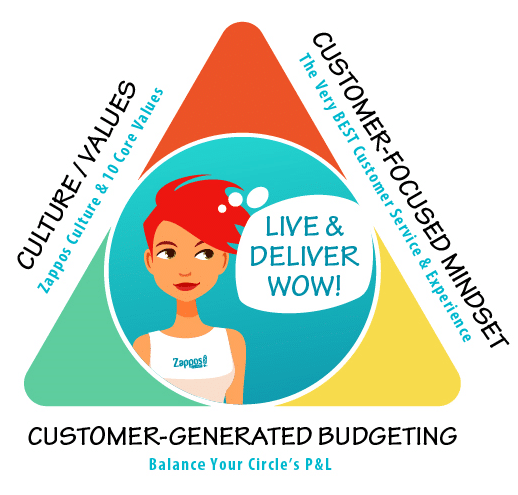
This is where it gets the most exciting for me. When Tony first invited me to Zappos, my mandate was turn a cost center into a profit center. The company spent a lot of money on giving away free tours, sharing business advice and sending out free culture books. All of this added up to at least half a million dollars in time and materials. We developed Zappos Insights from a content company to an experience company and by the time I left we were close to 8 figures in revenue.
Now Tony’s genius has extended to making every cost center into a profit center. Each department has a P&L that works both internally and externally. They buy and sell services – for example, a department needs HR’s services so that department has to pay for it, but it in turn can charge other departments like Audio/Video offers its services as well. And the system works externally as well. For example, A/V was contracted to shoot a commercial for Nike.
How cool is that?
I think it started with a frustration (or “tension”) about budgeting. In Holacracy it’s top down by circle. And one person in the group can deny a request. So it just takes one “no” to kill an idea. Now with this system, it just takes one “yes” from a department willing to fund it.
For more information, see the Evolve Program and especially the Glossary.
Everyone knows about evaluation tools like the Meyers Briggs, and DiSC, but what about one based on Oxytocin. I was thrilled to see Doug Kirkpatrick there, who had a key role in Morningstar’s self-management program. He told me that they’re now focused on the “O Factor” from the book The Moral Molecule. It’s all about how trust is directly correlated with high oxytocin and the organizations that have higher oxytocin have more trust. I was quite surprised to hear about this, and more surprised that Morningstar is leading the way.
15Five, the feedback company, has been using a system called the Gene Keys to help people find themselves, as well as paying for a ticket for any employee who wants to go to Burning Man for the first time.
Responsive 2020 will be at Zappos again. I highly recommend going.